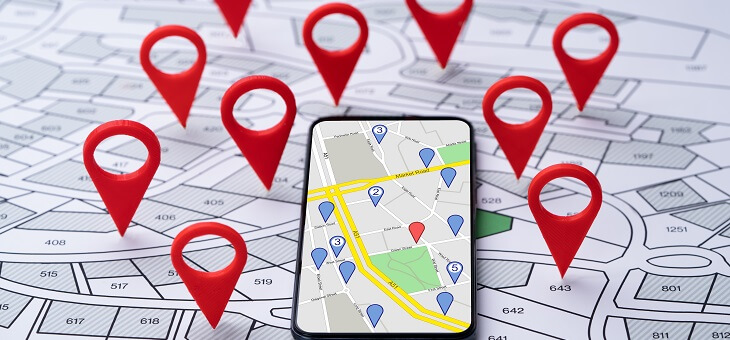The smartphone in your pocket is tracking and broadcasting your location at all times. Tech companies assure us this information is safe, but do you really know what happens to your location data?
As you go about your day, your smartphone is recording data about where you go, when you go there and how long you spend there.
This information has many beneficial uses, including providing accurate directions, locating services and points of interest nearby – even things such as real-time traffic updates.
But there is obviously a downside to broadcasting when and where you are at any time. This information is highly private and can be used for all sorts of nefarious purposes by businesses, political entities and criminals.
Read: Can your mobile phone get a virus? Watch out for these signs
Recently in the United States, it was revealed that a data collection firm was selling location data related to visits to clinics that provide abortions. The data tracked where people visiting the clinics had come from, how long they were there and where they went afterwards.
Closer to home, in 2020, the federal government’s COVIDSafe contact tracing app came under fire for giving potentially identifiable location information to strangers you passed on the street.
Last year, the Australian Competition and Consumer Commission (ACCC) won a landmark federal court case against tech giant Google for ‘partially’ misleading Australian consumers who thought they had ‘opted out’ of location tracking.
Both Google and Apple now offer the option to revoke your permission to be tracked. However, in Google’s case, users were required to select ‘No’ to both the ‘Do not collect’ and ‘Location Data’ options together in the phone’s settings.
The case highlights how confusing online privacy policies and phone privacy settings are for everyday people.
Read: The cheapest iPhone SE plans on each network
How to change location permissions on an iPhone
If you’ve updated you iPhone to iOS 15, go to Settings, then the Privacy option and then select Location Services.
This will open a menu of all the apps currently accessing your location data. You can tap on each one to cut off permission completely, allow total access or allow access only when you’re using an app. You can also designate that an app asks you for location permission the next time you launch it.
How to change location permissions on an Android phone
Changing app permissions on a phone using Google’s Android software can be, as the federal court ruled, a bit confusing. Different brands and models of phones use different versions of the Android software, so it will be slightly different each time.
In Android 12, the latest version, find the phone’s Settings option and then select Location. From there, select App Location Permissions to find a similar menu of apps to that seen in iOS.
Read: Why you should stay on top of app updates
Tapping each app gives you the option of giving permission Never, Always or Only when you’re using the app.
In addition, if you’re using Google Maps on either an iPhone or Android phone then Google will be tracking your location regardless of what you’ve selected in the phone’s settings.
To turn off Google Maps tracking, sign in to your Google account and go into the Settings. From here you can turn off location tracking for either your whole Google account, or individual devices tied to that account.
If you enjoy our content, don’t keep it to yourself. Share our free eNews with your friends and encourage them to sign up.

